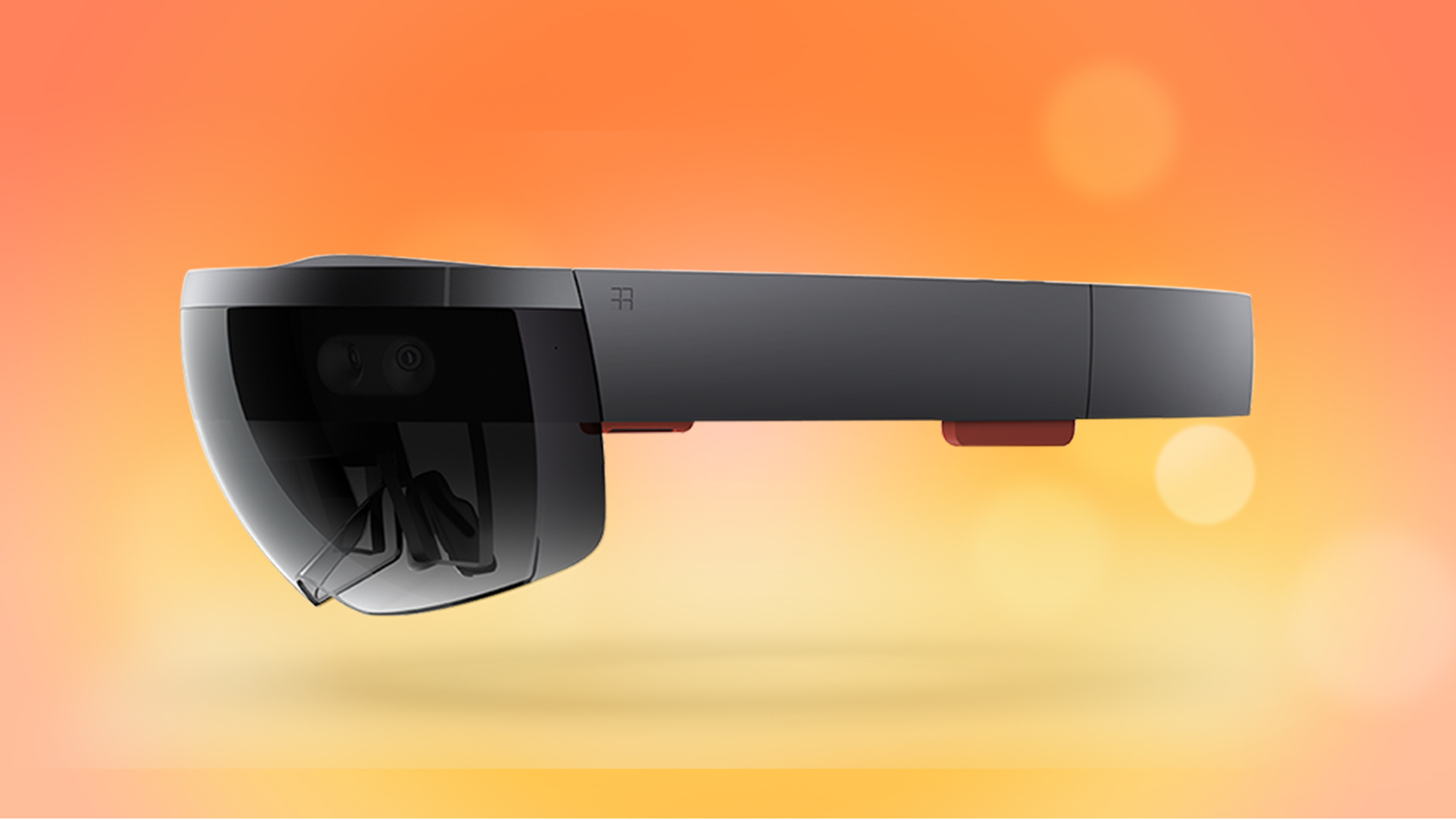Microsoft HoloLens: first impressions roundup

Just a week after Google announced it was shutting down its Google Glass Explorer program, Microsoft unveiled HoloLens, its see-through, head-mounted augmented reality visor. Good timing.
More than just a gimmick, Microsoft sees HoloLens and Windows Holographic (the software on which it runs) as the future of computing. But it's not quite Google Glass and it's not quite Oculus Rift. HoloLens puts virtual objects into the material world to form a 'mixed reality' that's unlike anything that's been offered before.
First impressions have been largely positive, and so while we're still penning our own initial thoughts, we've pulled together some of the early reactions to HoloLens from across the web.
'The potential to be transformative'
The question on everyone's minds after seeing HoloLens was, is it any good? Jimmy Thang at MaximumPC.com found out for himself just how well HoloLens functions, and his impression was that, if done right, the AR visor could be transformative. Here's how he described the Minecraft-inspired HoloBuilder demo.
"It never felt like the augmented reality objects were inappropriately floating in space or didn't have a sense of presence to them. It felt like all the Minecraft castles and farmlands were actually there (albeit in virtual miniature LEGO form) ... Considering this was our first demo, we expected a rough experience but were blown away by how good it all was. Even in its early state, this demo left us in awe.
"One of the picture frames in the room featured a cavern and it really felt like we could stick our arm into the cave. The 3D depth here is amazing."
Thang described Microsoft's Mars demo as realistic - "[n]ever did it feel flat or like images were being stitched together." Even the company's Skype demo "worked about as well as someone giving you instructions over the shoulder in real life."
Sign up for breaking news, reviews, opinion, top tech deals, and more.
'The combination of reality and unreality is amazing'
So, what does HoloLens feel like to use? According to BusinessInsider the experience is like a more immersive version of Google Glass.
"HoloLens is less jarring than Oculus, and a lot more flexible. With HoloLens, the programmer can control transparency of real-world objects. For instance, in one demo, the program superimposed the Martian landscape all around me, and I could barely see through it - except when I was looking at one particular PC monitor, which appeared front and center.
"It's closest to Google Glass, but I never saw a very good immersive application in Glass - it was always just a little tiny bit of information superimposed on the real world. Glass seemed more geared toward taking in information, like recording video. HoloLens was more interactive and two way. This combination of reality and unreality is amazing, and potentially incredibly useful, as the demos showed."
'Imagine if your walls and surfaces were made of Minecraft bricks'
It's fair to say that Gizmodo was impressed with HoloLens, calling it "one of the most amazing and tantalizing experiences I've ever had with a piece of technology". For them, the really exciting part of Microsoft's potential augmented reality breakthrough is the way it transforms everyday locations into interactive 3D environments, allowing you to blast through objects into unknown worlds waiting to be discovered:
"And it was really freaking cool to play Minecraft - or rather the Minecraft clone that Microsoft's calling 'HoloBuilder' - with real-world objects. Imagine if your walls and surfaces were made of Minecraft bricks. What would happen if you punched through?
"I knocked a hole in a table that let me see THROUGH the table, down into a cavernous underground with a giant lava pit at the bottom. I shot through a real-life wall and found a cave on the other side. Because Microsoft's glasses made that section of the wall invisible, duping my vision to let me see the cavern instead, it felt surprisingly real."
'She guided me where to go. It felt strangely natural, and I didn't need to configure anything'
Digging into reports from those who got the chance to play with it, HoloLens isn't purely about turning your living room into a real-life Minecraft setting or projecting otherworldly landscapes around your house. According to the The Verge it has the potential to change how we communicate and learn. By displaying the Skype interface and connecting a call with an engineer, Microsoft demonstrated how HoloLens can allow remote assistance workers to help you carry out tasks - such as fixing a light switch:
"We started by pinning her little window on top of a lamp. I could then look around the room and return to the lamp to see her face. She guided me where to go. It felt strangely natural, and I didn't need to configure anything or learn gestures other than the same 'Air Tap' you use to simulate a mouse click. While I was being talked through which real world tools we needed for the job, the Microsoft engineer called my attention to the wall with wiring and then started drawing where to position the light switch right on the wall.
"Thinking about it now it sounds totally surreal, but during the demo I didn't even think about it — it just felt like I was being guided around with annotations and a helpful friend. We connected the wiring, tested it for an electrical current, and then turned the power back on and switched the light on. It was all fixed, and all by using a crazy combination of a headset, augmented reality, and Skype. It might sound gimmicky, but the applications here are truly impressive."
'It's probably too early to start making demands of prototype hardware, but that's the danger Microsoft is running into here'
If you're still skeptical abut HoloLens, CNET's report by Nate Ralph, a self-confessed virtual reality skeptic, provides a more balanced viewpoint. While Ralph concedes that it's "unlike any existing virtual reality headset, Oculus Rift included" and has tons of potential, he sees HoloLens as the tip of the VR iceberg and reckons it will offer a lot more in the future:
"The HoloLens gave a surreal and satisfying experience, but I wanted more out of it. Currently, I could control it only with my gaze, and by hovering my finger in the air to tap on a cursor. Those work fine, but it needs more sophisticated gestures that mimic real-life movements. Let's say you want to dig a hole.
"You can call out for a shovel (voice inputs work fantastically) and it appears on a cue, but you dig by tapping rather than by moving your arms. Blowing up dynamite works similarly, as does scaring off wildlife. You get the desired result, but I wanted to pick critters. I wanted to claw away handfuls of soil, or flick zombies, or scratch away at the surface before me.
"Granted, it's probably too early to start making demands of prototype hardware, but that's the danger Microsoft is running into here. Even in its infancy, HoloLens gives me the augmented reality experience I never knew I wanted, and now I want it again and again."

Hugh Langley is the ex-News Editor of TechRadar. He had written for many magazines and websites including Business Insider, The Telegraph, IGN, Gizmodo, Entrepreneur Magazine, WIRED (UK), TrustedReviews, Business Insider Australia, Business Insider India, Business Insider Singapore, Wareable, The Ambient and more.
Hugh is now a correspondent at Business Insider covering Google and Alphabet, and has the unfortunate distinction of accidentally linking the TechRadar homepage to a rival publication.